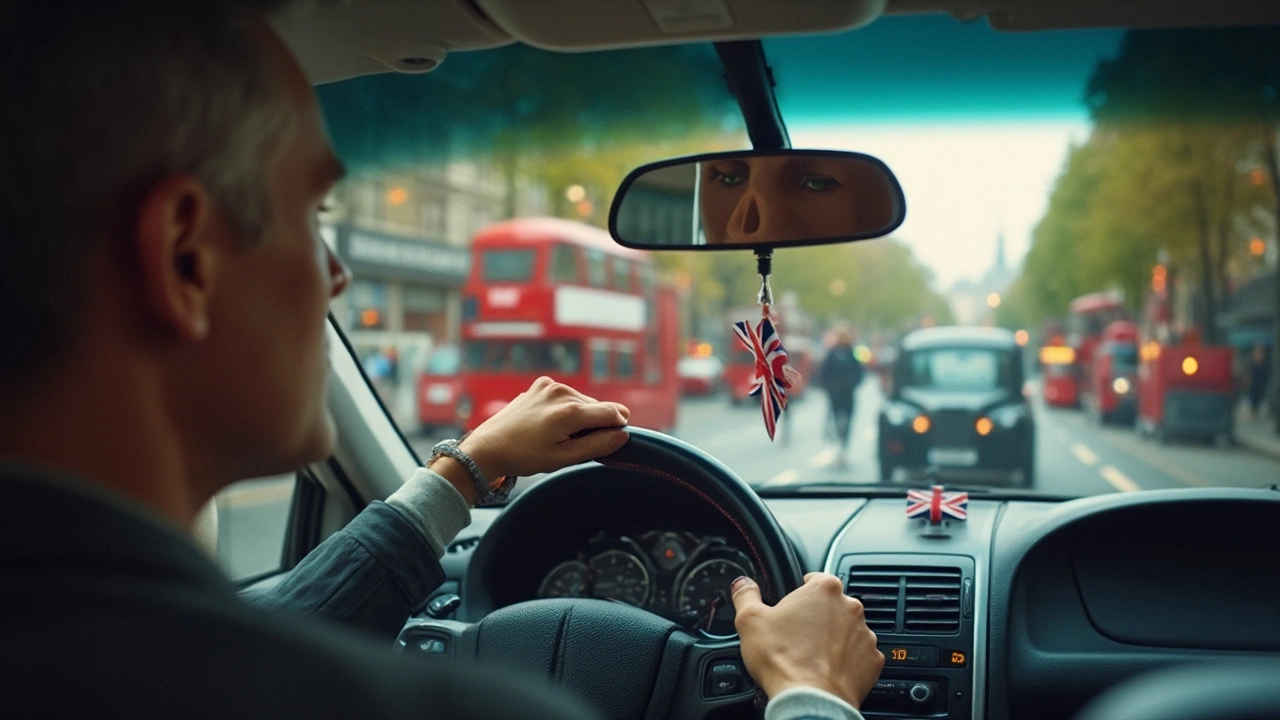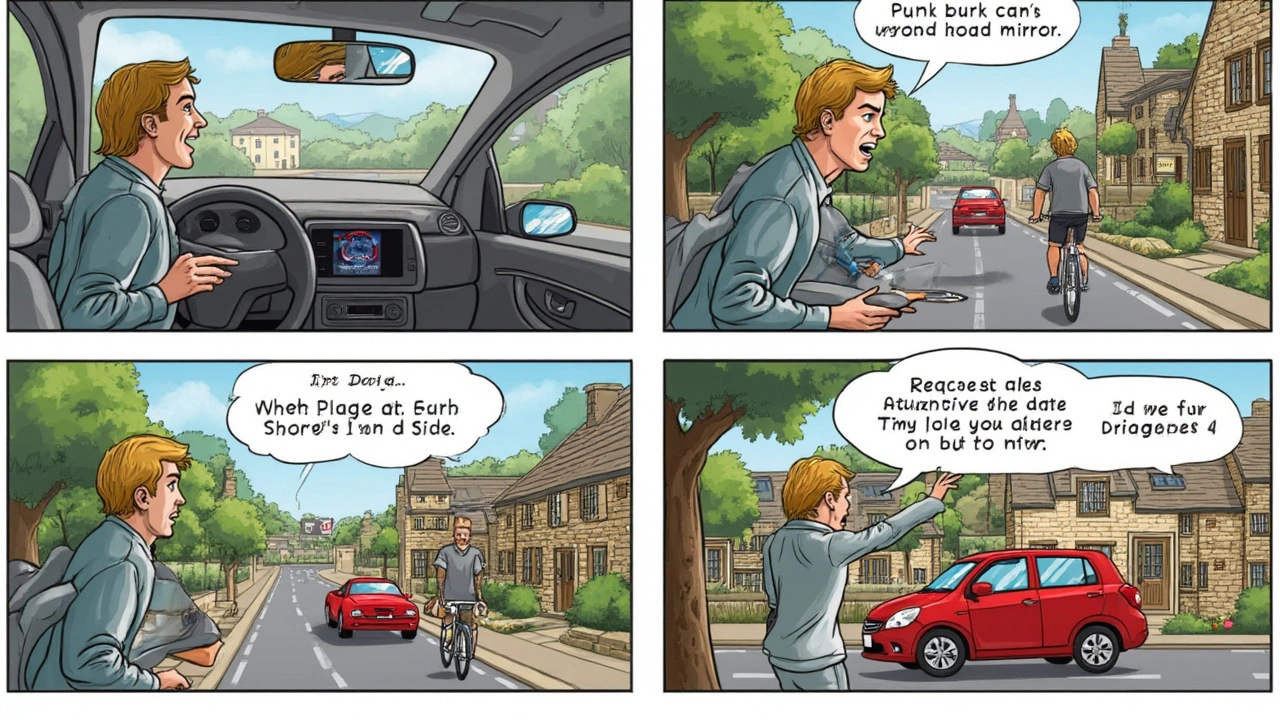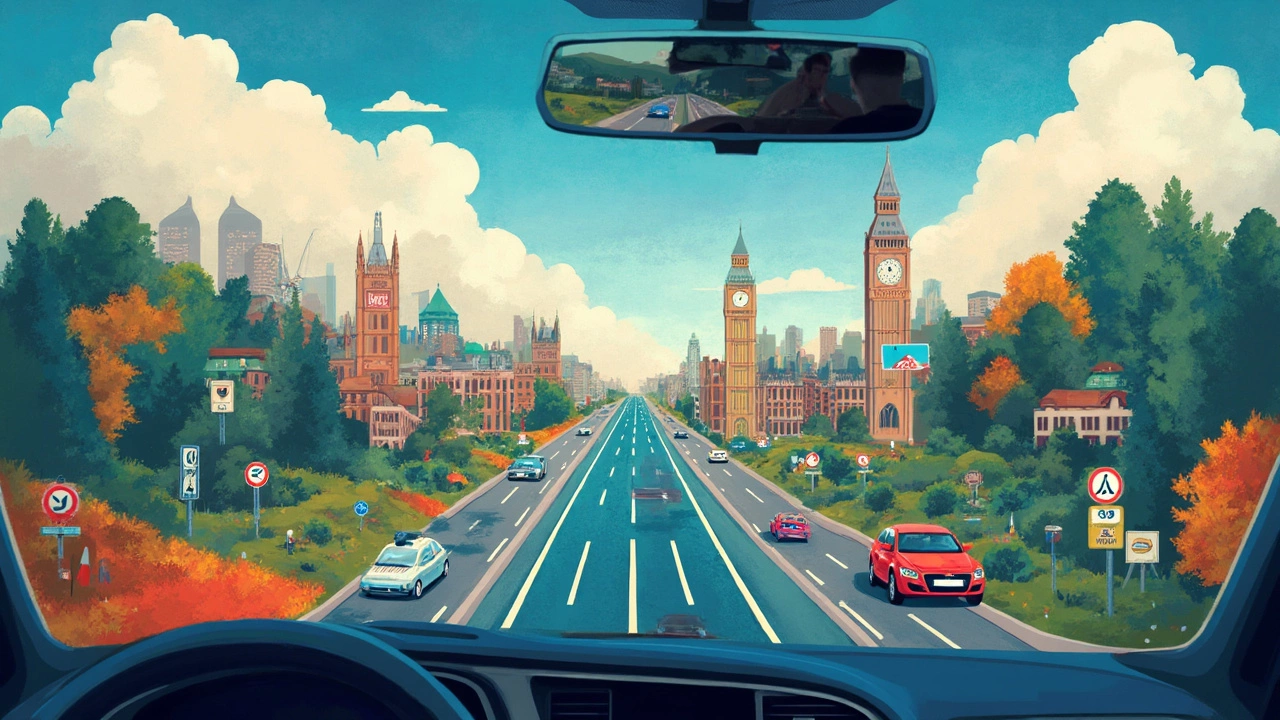How Often Should You Check Your Mirrors?

Driving safely isn't just about keeping your eyes on the road ahead. It's just as important to keep an eye on what's happening behind and beside you. That's where those mirrors come in handy. Seems basic, right? But you’d be surprised how many folks forget to use them properly or not often enough.
So, how often should you check your mirrors? Every few seconds when driving on a busy street, and less often when roads are calm, is a good rule of thumb. This keeps you aware of passing cars, potential hazards, and lets you make informed decisions. It’s like having a cheat sheet for making safer moves on the road.
But hey, it’s not just about glancing. It’s about knowing what to look for and when. There’s a method to using mirrors that ensures you’re not just staring blankly. Let’s dive into that and make sure your driving stays as safe as it should be.
Why Mirror Checks Matter
Using your mirrors isn’t just about checking your hair or adjusting your rearview for a picture-perfect look; it's a serious safety skill. You might think it's second nature, but nailing down the right mirror-checking habits makes a world of difference on the road.
Let's talk facts. More than a third of road accidents are rear-end collisions or sideswipes caused by drivers not being aware of what’s happening around them. Regularly glancing at your mirrors keeps you in the know. Think of it as your road awareness radar.
Here's why it’s so crucial:
- Awareness of Surroundings: Regular mirror checks ensure you're aware of vehicles creeping up on your blind spots or approaching intersections.
- Anticipate and React: Spot aggressive drivers or potential hazards early, giving you more time to respond smartly.
- Lane Changing and Merging: Ever tried merging lanes without looking? Exactly. It’s risky business. Proper mirror checks make lane changes smoother and safer.
- Legal Requirement: In many places, failing to check your mirrors can land you a ticket or worse—get you into an accident.
Making mirror checks a no-brainer part of your driving routine saves time and money by avoiding accidents and potential legal issues. Plus, it's nice not having a heart attack every time you switch lanes!
Focusing on this simple yet critical habit reduces road mishaps and makes you a responsible driver others can trust. So, next time you're behind the wheel, give those mirrors some love.
How Often to Glance
Keeping track of what's going on around you while driving is crucial, and your mirrors are your best buddies for this. So how often should you be checking them? It depends on the traffic situation and your driving environment.
When you're in a bustling city or heavy traffic, aim to check your mirrors every 5-8 seconds. Yes, it might feel like a lot, but staying aware of the chaos around you can prevent accidents and help you react faster if someone suddenly stops or changes lanes.
On the highway, when things are a bit more predictable, you can spread this out to about every 10 seconds. Keep an eye out for vehicles entering your blind spots and changing traffic conditions.
Here are some situations where it’s crucial to make those frequent mirror checks:
- Before changing lanes: A quick glance can make sure there's no car already in the lane you’re moving into.
- When merging: Mirrors help you spot a safe gap in traffic so you can merge smoothly.
- While parking: Constant checking ensures you don't bump into anything while reversing or maneuvering into a space.
The trick is to integrate these glances naturally. You don’t want to fixate, just a quick sweep to collect the info you need. Like building any habit, it takes some practice to make it feel second nature.
For those who love data, here’s a fun nugget: A study from the National Highway Traffic Safety Administration (NHTSA) found that not using mirrors properly contributes to approximately 14% of all car accidents. That's a good reason to make mirror usage a top priority.

Developing Good Habits
Building a routine for checking your mirrors can transform your driving skills from just alright to top-notch. It’s like any other habit—it requires some time to get used to, but once you’ve got it, you’ll wonder how you ever drove without it.
Start by making a conscious effort to glance at your mirrors every 5 to 8 seconds, especially in traffic. This helps keep track of vehicles around you and prepares you for any sudden changes. Consistency is key here. Practicing this regularly makes it second nature over time.
Place sticky notes as a reminder on your dashboard if it helps jog your memory. With time, your brain will automatically switch to “mirror-check mode” whenever you sit behind the wheel.
- Rearview Mirror: Keep an eye on the big picture of what’s happening behind you.
- Side Mirrors: Glance at these before changing lanes. They give you a deeper view of your blind spots.
- Wide-Angle Mirrors: If you’ve got them, great! They provide a broader view and reduce blind spots.
Remember, it’s not about being paranoid but about staying aware. A study from a driving school showed that drivers who regularly checked their mirrors had a 30% lower accident rate than those who didn’t. So, there’s strong evidence backing up the importance of this habit.
Common Mistakes
Hey, we all make mistakes, right? But when it comes to checking your mirrors, some slip-ups can be downright dangerous. Let’s talk about a few blunders drivers often make and how to avoid them.
First up, not adjusting your mirrors before setting off. This might seem like a no-brainer, but you won't believe how many people start driving without making sure their mirrors give them the best view of the world behind and around them. Make it a habit to check your mirrors every time you get behind the wheel, no matter how short the drive.
Next, glancing at all three mirrors too quickly. It's like a quick scan won't cut it; you need to give yourself enough time to actually see what's there. We're talking about what's in your rearview and those side mirrors for a complete picture. Slow down that head turning just a notch.
Distracted driving is another big one. If you’re fiddling with the radio or grabbing a quick snack, you might forget to keep up with your regular mirror checks. Staying focused is key, and mirror checks should be part of that focus.
Then there’s the old habit of only checking during lane changes. Sure, that’s crucial, but mirrors aren’t just for when you’re switching lanes. Keep tabs on what’s happening behind you a bit more often.
- Over-relying on car technology: Though lane assist systems are cool, they’re not foolproof. Your own eyes are still a driver’s best tool. Always check your mirrors
- Fixating on just one mirror: You've got three mirrors for a reason. Make sure to use them all for comprehensive situational awareness.
- Forgetting the blind spots: Even with mirrors perfectly adjusted, some areas stay hidden. The quick head check still matters.
By avoiding these common mistakes and getting into a habit of regular checks, you'll make better driving decisions and keep that road safer for everyone.

Staying Alert
Staying alert while driving combines more than just glancing at mirrors. It's about setting your mental radar to full power. Let's face it, distractions are everywhere, from the buzzing of your phone to that catchy tune on the radio. But ignoring these distractions can be a game-changer for your safety.
A key tip is creating a routine. Train yourself to consistently check your mirrors in regular intervals. When you're about to change lanes or approach intersections, that extra quick scan can be invaluable. It's like checking the time; it becomes second nature the more you do it.
Your physical condition also plays a huge role. Did you know that being even slightly sleep-deprived can be comparable to driving at the legal alcohol limit? Make sure you're rested before hitting the road. And if you're yawning or feeling drowsy, there’s no prize for muscling through. Pull over, stretch, or grab a coffee.
Being proactive means being ready for the unexpected. An unexpected swerve or a sudden stop from another driver means you should be prepared to react quickly. Defensive driving is all about staying prepared and having that mental checklist ready.
- Keep distractions minimized. Your phone can wait, trust me.
- Regularly adjust your mirrors for maximum visibility.
- Keep your mind in the game; don’t let it wander too far.
- Stay rested. Your body and your passengers will thank you.
And here's a cool stat to think about: Drivers using their mirrors properly are 40% more likely to avoid side collisions. That's a significant boost to your safety. So keep those eyes moving, and stay sharp.